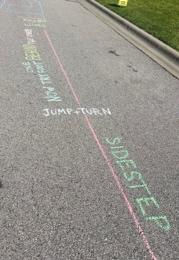Behavior Charting
- Ashley Contreras, OTAS, Allyson Coe, OTR
- May 10, 2017
- 2 min read

As a parent we have all had those moments where our child acts out, is throwing a fit, isn't listening to a word we say, we might feel like we are at our wits end with their tantrums, or quite frankly all of the above. When it comes to children and their behaviors, more could be going on then simply the terrible twos (or threes, or fours or fives, or eighteens even), a shorter nap time, or the fact that sometimes our kids can be brats.
For some children various sounds, different smells, types of lighting, crowded spaces, what they are wearing, who they are with or even time of day can be things that set off poor behaviors. Yet as parents, it may be hard to keep track of these patterns or trends when our kid is throwing themselves on the floor in the grocery store, screaming at the top of their lungs in the restaurant, or refusing to get dressed for school.
The ABC Chart is a resource that can be use to help track your child's behaviors and help to identify the potential issues that are initiating such behaviors. Within the ABC Chart, “A” stands of antecedent, or what happened or occurred right before the behavior took place. “B” represents behavior and describes what actions or responses your child demonstrated, while “C” is for consequence, or what occurred following the behavior.
By keeping track of the antecedent in such a way, you may be able to more easily determine if there is any correlation as to when a behavior occurs, what activities the kid is participating in when those actions are demonstrated, where the child is, or with whom the child is most likely to engage in such behaviors with. Meanwhile, tracking the consequence can allow you to understand if your child is looking to achieve or communicate something with their behavior, trying to avoid having to do another activity due to such actions, or is getting rewarded in some way by this behavior.
The ABC Chart can help can allow you as a parent to become more aware of what causes your child’s behavior. It can be a tool to help you better understand whether a behavior is positive or negative, how often it actually happens, and can provide insight about how to change such behaviors.
After charting, if you need any help with appropriate next steps in managing these behaviors, talk to your child's pediatrician or contact All Care for a free screening or for more information and tools. For additional resources about the ABC method and a link to the ABC Chart, you can check out the following websites:
https://www.nemours.org/content/dam/nemours/wwwv2/filebox/service/health/parenting/tips/10behavchart.pdf
https://cursos.campusvirtualsp.org/pluginfile.php/87023/mod_resource/content/1/ABC%20Chart.pdf




Comments